Papers by Richard Sonnenfeld
Aps Meeting Abstracts, Oct 1, 2003
Journal of Geophysical Research: Atmospheres, 2014
Monthly Weather Review, 2013
In measurements of the electric field associated with the current of a sprite 450 km from ground-... more In measurements of the electric field associated with the current of a sprite 450 km from ground-based field sensors, it was observed that the sign of the electric field was positive when positive charge was lowered from the ionosphere. A recent model for the electric field associated with the sprite current also predicts positive field changes at 450 km from the sprite. A well-known analysis of a vertical dipole in a thundercloud shows that the electric field on the ground reverses its sign at an easily computed distance from the dipole. A similar simplified electrostatic analysis of a sprite predicts a field reversal distance around 130 km. A more accurate electrodynamic analysis based on Maxwell’s equations indicates that the field reversal distance should be between 70 and 80 km.
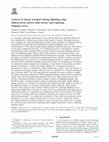
Journal of Geophysical Research, 2007
1] Recently, wide band measurements of the electric field near a lightning flash have been obtain... more 1] Recently, wide band measurements of the electric field near a lightning flash have been obtained by a balloon-borne electric field sonde or Esonde. This paper develops new techniques for analyzing lightning-associated charge transport in a thundercloud by using both the Esonde data and simultaneous Lightning Mapping Array (LMA) measurements of VHF pulses emitted during lightning breakdown processes. Innovations in this paper include the following: (1) A filtering procedure is developed to separate the background field associated with instrument rotation and cloud charging processes from the lightning-induced electric field change. Because of the abrupt change in the signal caused by lightning, standard filtering techniques do not apply. A new mathematical procedure is developed to estimate the background electric field that would have existed if the lightning had not occurred. The estimated background field is subtracted from the measured field to obtain the lightning-induced field change.
Journal of Geophysical Research, 2006
Journal of Geophysical Research, 2011
Applied Physics Letters, 1983
Langmuir, 1991
Page 1. Langmuir 1991, 7, 301-306 301 Motion of Atomic Steps of Au(ll1) Films on Mica Erwin Holla... more Page 1. Langmuir 1991, 7, 301-306 301 Motion of Atomic Steps of Au(ll1) Films on Mica Erwin Holland-Moritz,t Joseph Gordon 11, G. Borges, and Richard Sonnenfeld' IBM Almaden Research Center, 650 Harry Road, San Jose, California 95120-6099 Received June 25, 1990. ...
Physics of Plasmas, 2015
Turbulent transport in rapidly rotating shear flow very efficiently transports angular momentum, ... more Turbulent transport in rapidly rotating shear flow very efficiently transports angular momentum, a critical feature of instabilities responsible both for the dynamics of accretion disks and the turbulent power dissipation in a centrifuge. Turbulent mixing can efficiently transport other quantities like heat and even magnetic flux by enhanced diffusion. This enhancement is particularly evident in homogeneous, isotropic turbulent flows of liquid metals. In the New Mexico dynamo experiment, the effective resistivity is measured using both differential rotation and pulsed magnetic field decay to demonstrate that at very high Reynolds number rotating shear flow can be described entirely by mean flow induction with very little contribution from correlated velocity fluctuations.
Langmuir, 1991
Page 1. Langmuir 1991, 7, 301-306 301 Motion of Atomic Steps of Au(ll1) Films on Mica Erwin Holla... more Page 1. Langmuir 1991, 7, 301-306 301 Motion of Atomic Steps of Au(ll1) Films on Mica Erwin Holland-Moritz,t Joseph Gordon 11, G. Borges, and Richard Sonnenfeld' IBM Almaden Research Center, 650 Harry Road, San Jose, California 95120-6099 Received June 25, 1990. ...
Journal of Geophysical Research: Atmospheres, 2012
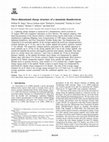
Journal of Geophysical Research: Atmospheres, 2010
Lightning charge transport is analyzed for a thunderstorm which occurred on 18 August 2004 near L... more Lightning charge transport is analyzed for a thunderstorm which occurred on 18 August 2004 near Langmuir Laboratory in New Mexico. The analysis employs wide band measurements of the electric field by a balloon‐borne electric field sonde or Esonde, simultaneous Lightning Mapping Array measurements of VHF pulses emitted during lightning breakdown, and Next Generation Weather Radar data. The thunderstorm was composed of two principal updrafts. In the stronger updraft the positively charged particles reached altitudes up to 14 km, and in the weaker updraft the positive particles reached 11 km altitude. The negatively charged particles generated in the updraft appeared to reach altitudes up to 10 km in the strong updraft and 8 km in the weaker updraft. Just outside the updrafts the positive and negative particles drop sharply; thereafter, they drop down at a nearly linear rate, between 1 and 2 km in altitude per 10 km in horizontal distance. Initially, as the updraft developed, most char...
Journal of Applied Physics, 1985
We present current versus voltage characteristics for two metal-insulator-semiconductor systems: ... more We present current versus voltage characteristics for two metal-insulator-semiconductor systems: lead-insulator-mercury cadmium telluride and silver-insulator-silicon. A previously developed new technique allows us to suspend the metal <20 Å above the semiconductor so that the insulator is simply the space between them. The Si studies at room temperature show features suggestive of electron tunneling between the metal and semiconductor, while the HgCdTe studies in liquid helium conclusively show the Pb superconducting energy gap, demonstrating that contactless tunneling studies of semiconductor surfaces are possible.
Applied Physics Letters, 1987
Scanning tunneling microscopy (STM) of (001) GaAs samples immersed in aqueous solutions has been ... more Scanning tunneling microscopy (STM) of (001) GaAs samples immersed in aqueous solutions has been used to assess the effectiveness of a standard bromine-methanol chemomechanical polish to produce flat surfaces over length scales from 5 to 1000 nm. The STM images reveal irregular 100-nm features coexisting with large areas of average roughness of the order of a few nanometers. The precision, stability, and reproducibility of these images suggest that immersion STM could be used to study surface chemical processes in real time.
Analytical Chemistry, 1991





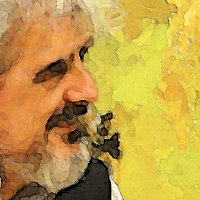

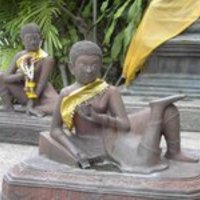

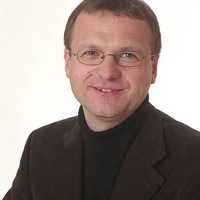
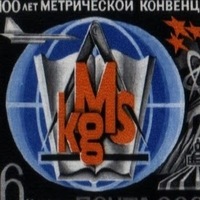
Uploads
Papers by Richard Sonnenfeld